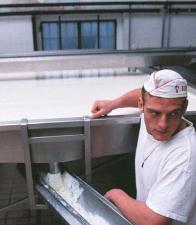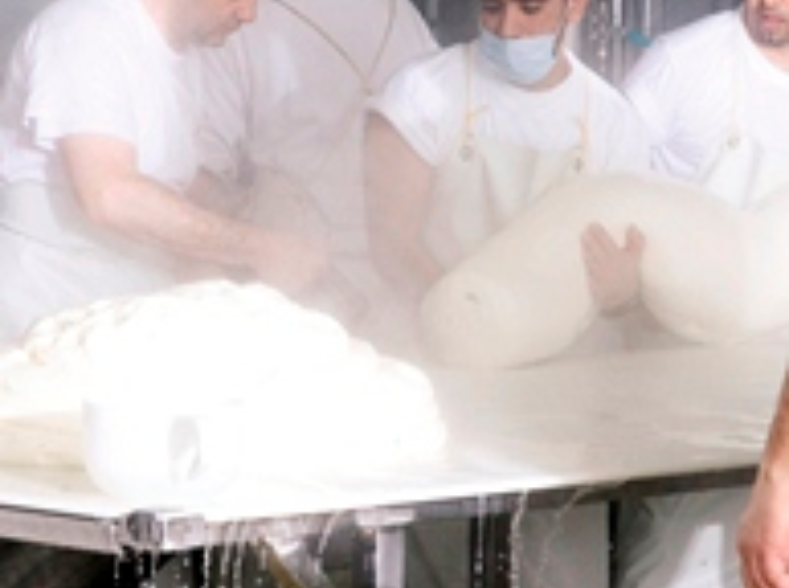The process of the famous Provolone is much the same as the Grana Padano and Parmigiano Reggiano. The only variance comes from the types of milk and rennet used to achieve each individual flavour. Provolone Piccante uses the finest full cream cows’ milk and is mixed with lamb/kid rennet to provide the extra sharp taste. Provolone Dolce uses full cream cow’s milk with added calf rennet, giving a softer more delicate milk taste. Provolone Giovane is a mixture of full cream cow’s milk and goats milk with added calf rennet for a softer textured young and delicate cheese.
 |
The first step in the provolone process has the milk expertly heated in large vats where rennet is added to encourage curdling. The curd is then seperated from the whey and allowed to settle in steel vats. |
 |
The curd is then spun in hot water at 80-85°C in order to produce a smooth elastic texture so the curd is ready to be shaped by hand. Yes, even the 100kg logs are all moulded by the hands of professionals! |
 |
Then the it goes through a salting process, left to soak in brine. |
 |
Once salted, they are left to age in storehouses which have about 85% humidity and a temperature of around 12-15°C. Here the cheese is hung by ropes where it forms the traditional 'salame' shape. |
 |
After the ageing process is complete, each provolone is hand stamped with the Auricchio logo to ensure its quality and authenticity. |


